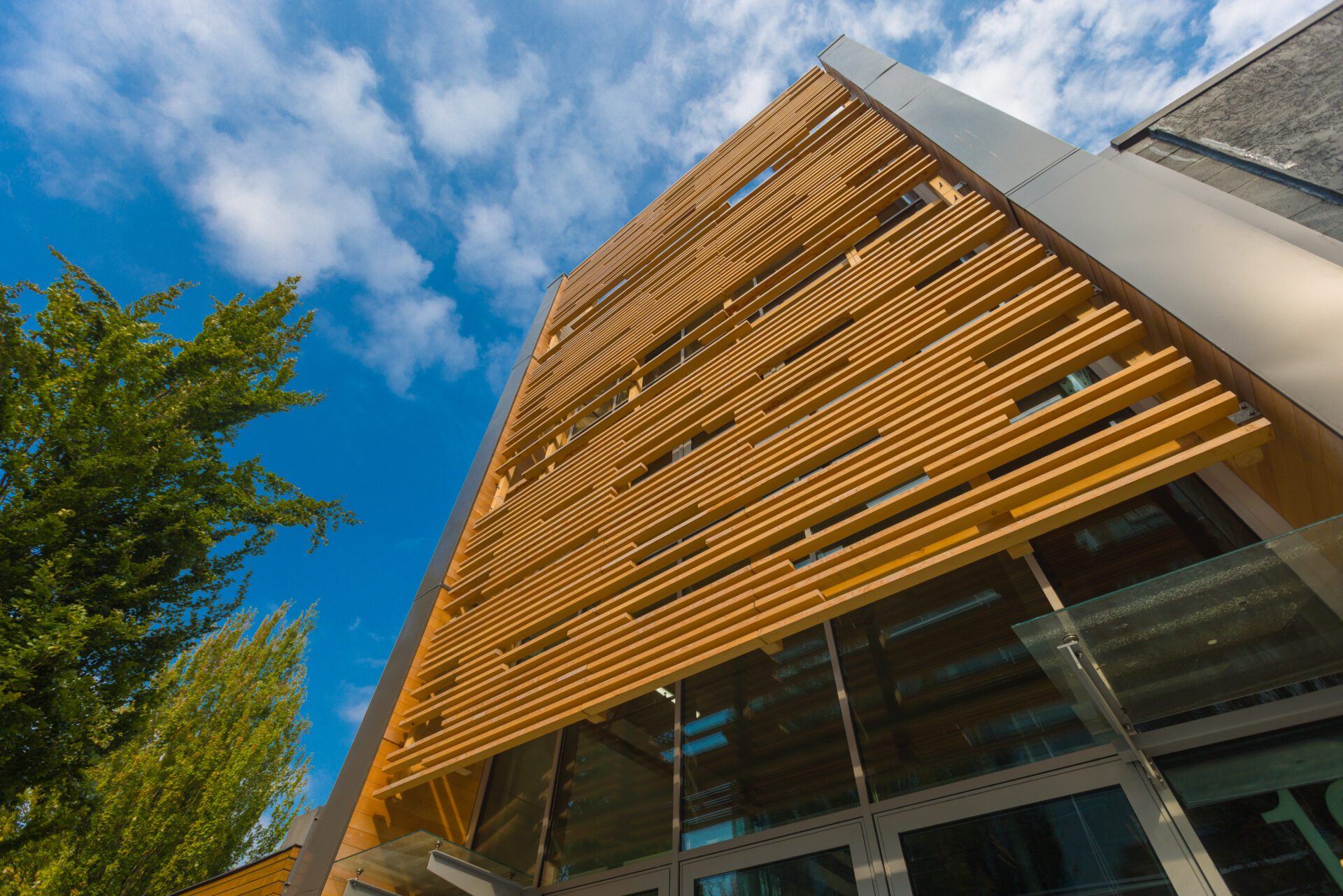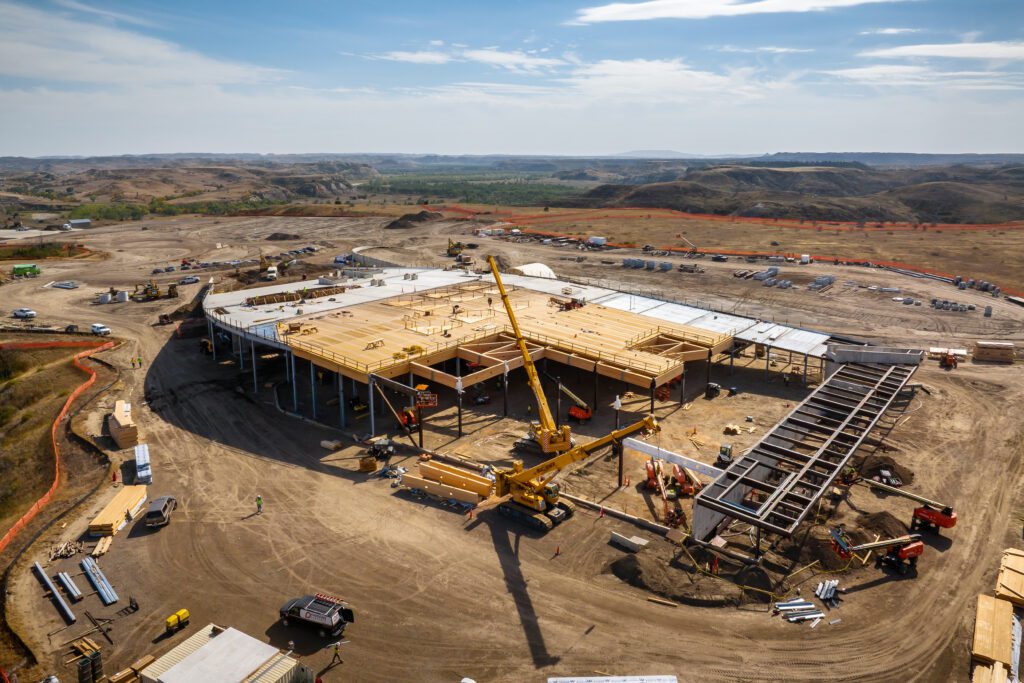But sticking to the status quo simply won’t cut it anymore.
The world now faces a new reality — one that calls for immediate action to boost building efficiency, protect the environment, and meet evolving societal demands, all while ensuring the outcomes are affordable. The pressing need for a versatile building solution has only grown more acute.
Mass timber, a family of engineered wood products, rises as the latest game-changer in construction, leading the charge and taking building practices to the next level.
Mass Timber Construction vs Steel and Concrete
It’s well known that traditional construction materials like steel and concrete come with a long list of inherent challenges, ranging from high carbon emissions to lengthy construction timelines and limited design flexibility.
So, how can mass timber change things for the better?
The Carbon Challenge
A particularly in-your-face issue with traditional construction materials is their notably large carbon footprints. High energy consumption levels in production paired with substantial waste generation only pile onto an already prominent climate crisis.
That’s where mass timber proves to be the ideal sustainable upgrade in construction, with reduced waste, carbon sequestration abilities, and a promoted interest in forest farming. The industry has started to catch on too. A study by the U.S. Department of Agriculture found that mass timber has the power to reduce a building’s carbon footprint by up to 45% compared to traditional concrete and steel solutions.

Three hypothetical buildings (wood, steel, and concrete) of identical size and configuration are compared. In all cases, impacts are lower for the wood design. Source: Dovetail Partners using the Athena Eco-Calculator.
But the mass timber movement spans much further than just ticking ESG boxes.
Climate change threatens the integrity of many buildings, with severe storms growing evermore present across North America. Unlike steel and concrete, mass timber is able to bend without snapping. This inherent strength and seismic resistance makes it the perfect contender for building more disaster-resilient infrastructures.
The Construction Time Crunch
The U.S. is already behind on its construction targets — and steel and concrete are doing nothing for time efficiency.
Pouring, shaping, and handling these heavyweight materials are incredibly labor-intensive tasks, which naturally slow down the whole process. Mass timber, on the other hand, speeds things up, beating concrete project times by 25% with 90% less construction traffic required.
Through off-site prefabrication, hordes of on-site crews are no longer necessary. Instead, mass timber is transported and assembled without hassle, minimizing the need for numerous construction trades and helping pockets in the long run.

Supply Chain Setbacks
Whether its port congestion or geopolitical conflicts, key supply chain channels have been hit hard in recent years, forcing contractors to think twice about their construction material resourcing.
A key incentive backing cross-laminated timber is its potential for local supply. By developing domestic supply chains, mass timber projects instantly become less vulnerable to the common disruptions faced in global trade routes. This new-found resilience eliminates the sole reliance on international supply networks.
As the number of mass timber projects in North America continues to grow, more investors will begin doubling down on funding to support transportation infrastructure and afforestation initiatives. And it’s already started to happen. In fact, the demand for a reliable, local construction solution has reportedly been a direct driver of the global mass timber market, with expectations to grow at a CAGR of 13.8% from 2022 to 2030.
What does this all mean? Faster construction schedules, reduced labor and travel costs, and a smaller impact on the environment.
Carving the Construction Landscape
While mass timber is on the rise, there are a few industry hurdles to overcome before it can transform into a mainstream construction material.
Traditionally, building codes have taken a conservative stance towards the use of wood as an infrastructure material, especially concerning larger and taller structures. This is partly rooted in myths and misconceptions that stem from using raw, untreated wood as a building resource. However, cross-laminated timber has proven itself to be a robust, secure, and fire-resistant material.
But simply updating building codes is easier said than done.
The legislative nature of building codes means it takes time to keep the pace with innovation. But the widespread adoption of mass timber has called for regulatory bodies to address technical hurdles and make the necessary changes. Organizations like the International Code Council (ICC) are actively developing and updating building codes, design guidelines, and engineering standards to cater to the needs of mass timber construction. Recent International Building Code (IBC) changes have even increased heights on mass timber projects, opening up more opportunities for projects in dense urban spaces. The IBC stands as a primary example of the industry’s momentum toward widespread adoption, evidenced by its acceptance in 20 states.

Height Limits for Building Types IV-A, IV-B, and IV-C in the 2021 International Building Code (IBC). Source: Woodworks – Wood Products Council
But mass timber isn’t just about the material — it’s about the people who build with it. To work with mass timber, contractors need to expand their expertise. Upskilling in areas like prefabrication, precision manufacturing, and mass timber installation equips workers to master the art of timber. Not only does this ensure top-notch quality control and fire safety compliance, but it also generates jobs and opens doors to new career paths, supporting the economy as a result.
Timbering Towards a Better Future
The construction industry is at a crossroads.
Trades can either stick with what they know and continue their struggle with rising labor costs and time efficiency, or they can begin to broaden their horizons and reap the benefits of familiarizing themselves with mass timber construction.
The need for change is undeniable and mass timber opens the door to new possibilities in design and construction methods.
As the construction industry grapples with the need for change, mass timber emerges as a promising solution that could pave the way for a new era of innovation.


